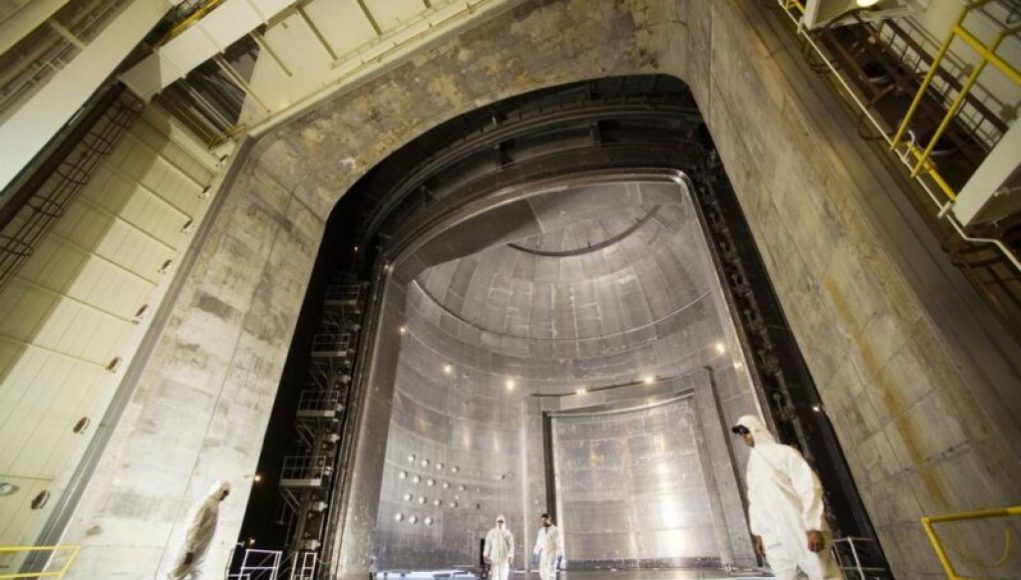When a hurricane damages buildings at NASA’s Kennedy Space Center or hits a rocket factory in New Orleans, it’s big news. The immediate focus is on repairing the damage so that missions can proceed with their launches.
However, there is a deeper issue with NASA’s infrastructure. According to Erik Weiser, director of NASA’s facilities and real estate division, the agency’s budget for maintenance and construction is severely underfunded.
In his presentation to the National Academies committee, Weiser described NASA’s infrastructure as being in an “increasing state of decline.” There is a significant gap between the funding NASA needs to maintain or upgrade its facilities and the actual amount allocated for those efforts. Weiser stated that the maintenance gap is $259 million per year based on NASA’s most conservative estimate, or over $600 million if NASA followed the maintenance practices of the commercial industry.
Furthermore, this gap is growing, leading to the deterioration of NASA’s facilities over time. Weiser emphasized that “the majority of our facilities are beyond their useful life.”
“The trend is not good”
Weiser revealed that 83 percent of NASA’s facilities are beyond their design life, which is significantly higher than the percentage of NASA’s workers eligible for retirement (approximately 25 percent). This is a major concern for the space agency.
Funding for facility maintenance comes from various sources within NASA. Some money is allocated by specific mission directorates responsible for ensuring the good condition of launch pads, test stands, and other facilities at NASA’s field centers. Additional resources come from a general overhead fund.
Advertisement
“Each center knows what their most important facilities are for success, so when they see an issue, it’s all hands on deck to fix that problem so they don’t impact the mission,” Weiser explained.
However, continuously prioritizing maintenance needs is not a sustainable solution.
“We’re deferring projects year in and year out, and over the last four years, we’ve had to defer 78 projects,” Weiser revealed. “All that does is increase the risk on the maintenance side because a lot of those projects that were deferred were repair projects, whether it’s horizontal infrastructure, such as electrical distribution, potable water, sanitary sewer, or major renovations to buildings and other facilities.”
“Without completing those projects, there’s more pressure on the maintenance side to handle unplanned failures,” he added. “Many of these unplanned failures could lead to mission risk and missed milestones, and we certainly don’t want that to happen.”
Weiser provided a briefing to a National Academies panel tasked with examining the critical facilities, workforce, and technology required to achieve NASA’s long-term strategic goals and objectives. This briefing was part of a series of public meetings the committee will hold before issuing a final report with recommendations to improve the situation. The report is expected to be reviewed by NASA leadership, lawmakers, and White House budget officials.
According to Weiser, the majority of NASA’s facilities across the country are rated as “marginal to poor” in condition. He emphasized that this assessment includes not just the equipment within the buildings, but also the buildings themselves. Even if NASA has state-of-the-art equipment, it becomes useless if the supporting building fails.
For the past six decades, the National Aeronautics and Space Administration (NASA) has been a pivotal part of American ingenuity and exploration of the universe. From putting the first humans on the Moon to creating the revolutionary Hubble Space Telescope, the agency has pushed the boundaries of discovery. While many of these remarkable achievements are considered an integral part of the United States’ 20th-century history, NASA is facing a new problem: an aging workforce and historic buildings.
Due to changing technology, NASA has seen its employee ages shift dramatically. Whereas the average age of a NASA employee was around 40 in the 1960s, it now stands at around 50 years old. While the agency is known for attracting employees of all ages, the large presence of older employees has had an inevitable strain on the agency’s operations and efficiency. A report released in 2015 concluded that the ability of these older employees to adapt to newer processes was lagging far behind the modern pace.
Simultaneously, NASA must also confront the challenge of dealing with their historic buildings. The iconic Mission Control Center was added to the National Register of Historic Places in 1985, yet it is in need of major repairs. Many of the other iconic buildings scattered across the 16 NASA locations need maintenance or refurbishment. The agency is required to ensure that the buildings remain in their original condition in order to maintain the historic integrity of the site.
These issues are two sides of the same coin. It is expensive to upgrade the technology and make the necessary repairs for the buildings, but the work of NASA’s older employees is invaluable in safeguarding the agency’s path. The challenge now lies in finding a balance between the two so that they can be adequately addressed.
NASA is faced with an ever-changing landscape, and so it must continuously innovate in order to stay ahead of the curve. With an aging workforce and historic buildings in need of attention, this challenge has never been greater. As the agency continues to push the boundaries of exploration, they must consider how to bridge the gap while ensuring their place in history.




















